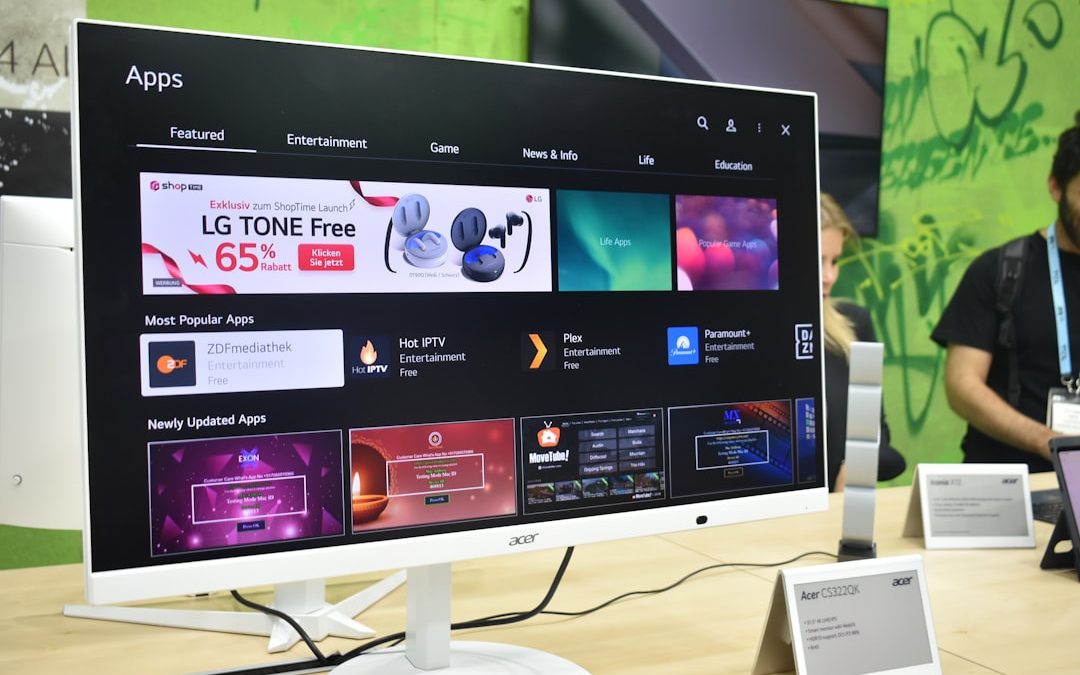In recent weeks, a significant number of LG Smart TV users have reported persistent crashes of the Netflix app following a firmware update to the LG WebOS operating system. What was initially intended to be an update that improved performance and added new features ended up causing major issues for thousands of users around the globe. In this article, we will explore the root causes of this issue, how it affected users, and how a firmware rollback eventually saved the day.
TL;DR: A recent WebOS update for LG Smart TVs caused the Netflix app to repeatedly crash, frustrating many users. The problem seemed rooted in compatibility issues between the WebOS firmware and the latest Netflix app version. After a flood of complaints, LG released an official method to roll back the firmware, which restored stability and performance. Users are now advised to either delay updates or follow rollback steps if issues arise again.
Understanding the WebOS and Netflix App Crash
WebOS is LG’s proprietary operating system for its Smart TVs. Known for its slick interface and ease of use, WebOS is widely regarded as one of the best smart TV platforms. However, even the most robust systems aren’t immune to bugs during updates.
The trouble began shortly after LG rolled out a WebOS firmware update in early 2024. Post-update, users began experiencing:
- Netflix app freezing upon launch
- App crashes during content streaming
- Failure to open the app entirely
- Error messages such as “App unavailable” or “Network error” despite strong connections

These symptoms affected a wide variety of WebOS-powered LG TVs, especially those manufactured from 2019 to 2023. While other streaming apps continued to function normally, Netflix, often considered mission-critical for many households, was rendered nearly unusable.
User Frustration and Market Response
As issues escalated, users flooded support forums, subreddits, and customer service lines. Many attempted typical troubleshooting steps:
- Reinstalling the Netflix app
- Resetting the TV to factory settings
- Checking for additional updates
- Clearing cache and memory
Unfortunately, none of these tactics resolved the core issue. A growing number of users began to question the reliability of both Netflix’s app development and LG’s update quality assurance processes. Some even started considering alternatives like streaming through HDMI-connected devices or abandoning the LG ecosystem altogether.
The Core Problem: A Compatibility Glitch
Industry insiders and reverse engineers soon weighed in, revealing that the problem likely stemmed from a low-level compatibility issue. The new WebOS build had changed certain API calls and memory allocation behavior. Netflix’s app, still designed for a slightly older infrastructure, experienced recurring runtime exceptions as a result.
“The latest firmware made subtle changes to the way apps interact with GPU resources,” explained one developer on GitHub. “Netflix’s app was built without those changes in mind and didn’t adapt well.”
Temporary Fixes and Community Workarounds
Before the official solution from LG surfaced, some users came up with creative workarounds that showed partial success:
- Disabling auto-updates for both the OS and apps
- Connecting Netflix through an external Fire TV Stick or Chromecast
- Using web browser based login to Netflix as a rough substitute
These temporary fixes bought time but couldn’t match the integrated performance of a native Netflix app. For prolonged viewing sessions, the experience remained less than ideal.
The Rollback Solution Emerges
Facing increasing backlash and support requests, LG finally acted. In an official bulletin released three weeks after the problematic update, LG provided users with an option to roll back their firmware version.

The rollback process was carried out in two primary ways:
- Automatic Rollback via LG Support Tool: LG remote-accessed TVs through their support tool and performed the downgrade with user consent.
- Manual USB Method: LG offered downloadable firmware packages on their support site. Users could load these on a USB drive and install them via the TV’s service menu.
The rollback returned the affected TVs to the last stable firmware, typically version WebOS 6.x or 5.x, depending on the model. Once reverted, most users reported that the Netflix app launched without issue and resumed normal functionality.
Response from Netflix and LG
Netflix acknowledged the issue but emphasized that they were limited in scope because OS-level changes were outside their control. Meanwhile, LG committed to more rigorous testing in future updates, particularly with major streaming apps that many users rely on daily.
LG also introduced a new feature in their System Settings menu: “Firmware Version Lock”, which, when enabled, prevents automatic updates. This gives users more control over whether and when to update, based on reports of app compatibility and stability.
Lessons Learned for the Streaming Ecosystem
This incident underscores several key takeaways for both manufacturers and consumers:
- For OEMs: Major platforms like Netflix, Hulu, and Disney+ should be part of regression testing before firmware releases.
- For consumers: Enable version lock and delay installing new firmware for at least a few weeks after initial rollout.
- For app developers: Apps need robust version detection and contingencies if OS-level interfaces change unexpectedly.
Ultimately, while the issue was inconvenient, it led to improvements in user control and update transparency—benefits that may serve users better in the long run.
Frequently Asked Questions (FAQ)
- Q: Why did my Netflix app start crashing after an LG update?
A: A firmware update to WebOS introduced changes that conflicted with the Netflix app’s functions, leading to crashes, freezes, and other errors. - Q: Can I reverse the LG firmware update myself?
A: Yes. LG provided official rollback instructions. You can either contact LG support for remote assistance or follow the manual USB method via their website. - Q: Will disabling auto-updates prevent future issues?
A: It can help. By enabling the new ‘Firmware Version Lock’ feature in settings, you can delay updates until stability reports come in. - Q: Did this problem affect other apps like Disney+ or YouTube?
A: No. Most issues were isolated to Netflix due to specific conflicts between its app’s code and the new WebOS APIs. - Q: Is it safe to update in the future?
A: Future updates will likely be safer, but waiting for online feedback before applying new firmware is a smart strategy.
While the Netflix crash was certainly a nuisance, the industry’s response—including better update management tools and the ability to rollback firmware—represents a step forward in addressing modern smart TV challenges.
yehiweb
Related posts
New Articles
StarryAI AI Style Drift After Multiple Iterations and How Version Lock + Prompt Reuse Maintains Consistency
If you’ve been generating art using platforms like StarryAI, you might have noticed an interesting trend: the art style of…


